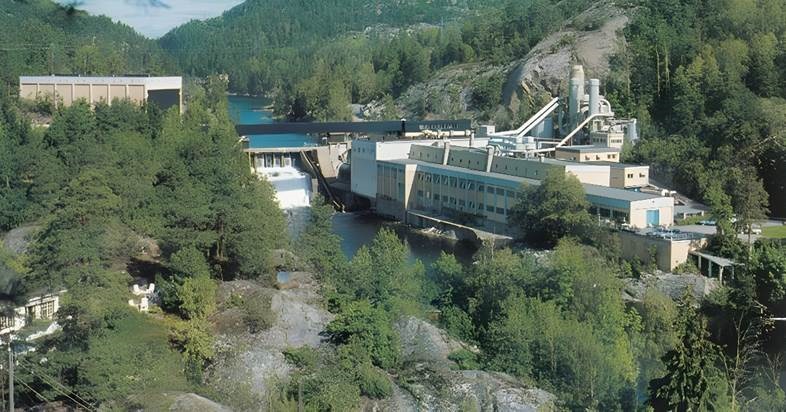NEWS
Pulp plant decarbonizes by switching to electric drying
Vafos Pulp, a Norwegian producer of unbleached pulp for cardboard manufacturing, will switch its energy-intensive drying process from oil to electricity, greatly reducing the plant’s carbon emissions. The company will replace a nine megawatt (MW) oil-fired boiler with electric heaters, controlled by ABB technology. The Kragerø pulp plant, which produces 80,000 tons of pulp each year, will eliminate 14,000 tons of CO2 annually from Summer 2022. That is the equivalent to the annual emissions of approximately 7,000 combustion-engine cars.
The new air heaters require a significant amount of power and managing them is key to maintaining plant safety, operating efficiently, and minimized downtime. They are controlled by ten ABB DCT880 power controllers to manage the power supplied to the electrical heating elements. The controllers are mounted in containers and utilize a Power Optimizer feature to create a steady load that minimizes disruption for the local electricity grid. The integration of the systems was a joint effort by ABB and Norwegian system integrators EAS and Actemium Electro.
The DCT880 power controllers are a long-lifetime product and contain the latest control technology and interfaces. This will enable the Kragerø plant operators to control the drying process more precisely than when they used oil. The switch to electricity also means that the facility no longer needs oil storage on site.
“The age of burning heavy oil in Norway is over,” says Roar Paulsrud, CEO of Vafos Pulp. “Customers expect us to be part of the green transition with sustainable production. It is also important that our industry helps reduce emissions here in Norway.”
“The project in Kragerø is a great example of how organizations can decarbonize by using modern electric alternatives,” says Lars-Fredrik Mathiesen, head of ABB Motion in Norway. “As Norway’s grid is being almost entirely powered by renewable energy, moves like this one by Vafos Pulp lead the way for others in industry, and will be key to achieving the government’s goal of cutting CO2 emissions in half by 2030.”








